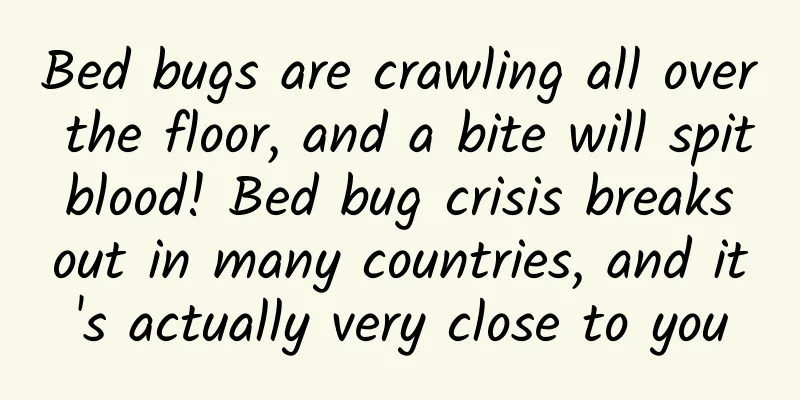I never thought that these things that we use every day are dirtier than toilets! How can we clean them more effectively?

|
Wake up to the alarm in the morning Fingers flying on the keyboard while working, switching programs with the remote control while lying on the sofa at night... These are the most insignificant parts of life, but they hide a shocking truth: our closest electronic friends have become breeding grounds for bacteria. 0 1 Mobile phone: 10 times more bacteria than toilet seat A few years ago, a survey by the British consulting firm Deloitte showed that people check their phones an average of 47 times a day, during which time microorganisms on their hands will adhere to their phones . After a survey of high school students' phones by the University of Tartu in Estonia, it was found that the average number of bacterial gene copies on each phone exceeded 17,000 . In addition, Chuck Gerber, a microbiologist at the University of Arizona, found that the number of bacteria on mobile phones is more than 10 times that of most toilet seats . One sixth of the bacteria on mobile phones come from feces, including E. coli that causes stomach discomfort . 40% of people like to play with their mobile phones when going to the toilet, but only 20% of them will clean their phones after "taking care of it". There are indeed a lot of bacteria on the surface of our mobile phones. Although most of them are harmless, there are also bacteria that are enough to cause disease, such as Staphylococcus aureus . About 20% of people are long-term carriers of this bacteria, which often hide in the human nasal cavity. People will bring this bacteria to their mobile phones after picking their noses and then sending text messages. This bacteria often causes bacterial food poisoning, impetigo and even sepsis. In addition, when making a phone call, the squirming bacteria on the surface of the phone will inevitably be rubbed onto the face and other parts of the body, which may cause acne, pneumonia, and meningitis. Some people's skin acne may be closely related to the frequent use of mobile phones contaminated with germs . Another expert said: In an experiment, 24 out of 100 nurses' mobile phones were found to contain pathogens. People who have close contact with public environments are more likely to have their mobile phones contaminated with pathogens. Every day when we touch various objects, we may also come into contact with other dangerous pathogens such as streptococci, antibiotic-resistant bacteria, and E. coli. Many pathogens can be carried for about 7 days, and some can be carried for up to 21 days . In fact, it is not difficult to eliminate these bacteria safely. Because the bacteria on the toilet can easily stick to the mobile phone, try not to bring your mobile phone with you when you go to the bathroom; after using your mobile phone in the bathroom, it is best to wipe the mobile phone with a soft microfiber cotton cloth ; if you want to be cleaner, you can also use 75% alcohol with a microfiber cloth for cleaning and disinfection. Remember to turn off the power of the mobile phone before wiping . In addition to mobile phones, similar touch-screen devices are also "hard-hit areas" for bacteria accumulation. For example, tablet computers have a larger surface area than mobile phones and carry more bacteria. British researchers found that about 6 million units of Staphylococcus aureus were attached to their surfaces. Many children now play with tablet computers, and often rub their eyes or put their fingers in their mouths after playing with them for a while. These may be the cause of children's illness, so all touch-screen devices must be disinfected. 02Keyboard: The amount of bacteria is 400 times that of the toilet seat With the popularity of electronic office work, white-collar workers work on keyboards for 8 hours or more every day, but few people think of cleaning and disinfecting the keyboard. Researchers at Swinburne University of Technology in Australia found that the number of bacteria on office desk keyboards is 400 times that of toilet seats . A Dutch hospital tested 100 keyboards and found that 95 of them contained streptococci, staphylococci and other pathogens, making them the dirtiest objects in intensive care units. Most microbiologists agree that desks and keyboards should be cleaned at least once a week . Experts at the National Institutes of Health also recommend that people wash their hands before and after using a shared computer, especially during flu season. If your keyboard is personal, most of the germs on it come from your fingers, and while they may not harm your health, you should still wash your hands frequently to keep your keyboard clean. When cleaning the keyboard, first turn off the computer, unplug the power plug, and then use a hair dryer to blow away the debris or dust stuck in the gaps of the keyboard ; or use 75% alcohol and a fiber cloth dipped in the solution to wipe the keyboard, and use a cotton swab soaked in alcohol to wipe the gaps between the keys . 03 TV remote control: 20 times dirtier than a toilet seat TV remotes are often overlooked when it comes to daily cleaning, but they are one of the dirtiest items in the home. A 2020 study showed that TV remotes are 20 times dirtier than toilet seats, harboring a large number of mold, bacteria and yeast . Analysis showed that TV remotes were the most bacterial of the items tested, with bacteria and yeast reaching 290 colony-forming units per square centimeter, including severe mold. In contrast, toilet seats only had 12.4 colony-forming units per square centimeter and only mild mold. The most disgusting thing is that the hotel's remote controls are the worst, with traces of urine or feces, etc. They are also a hiding place for some cold viruses and other bacteria . The researchers stressed that now that we know how unhygienic the remote control is, considering that it is something that people often touch, it is recommended to disinfect the remote control regularly. You can wipe it with 75% alcohol or 500mg/L chlorine-containing disinfectant, or you can directly use disinfectant wipes. And it is best to wash your hands after use. 04 Earplugs: Wearing them for one hour may increase the amount of bacteria by more than 27 times Many people have never cleaned their earphones. Since they use them themselves, they don’t think they are dirty. In fact, earphones are definitely a hotbed for dirt and filth. Remember, your ears are filled with earwax, dead skin cells, and lots of bacteria—all of which will cling to your earbuds. While earwax looks super gross, it's actually pretty harmless. The real problem with earbuds is that their moist, slimy surface invites bacteria to multiply and grow. After putting on the earplugs, the air in the ears is difficult to circulate, the temperature in the ears rises sharply, and the bacteria on the surface of the earplugs will multiply rapidly. According to the test research of Sun Liying, deputy chief physician of Peking University First Hospital, the number of colonies in the samples collected before wearing the unsterilized " earplug-type headphones " was only 4, and the number of colonies in the samples collected after wearing for 1 hour reached 14, and the bacteria multiplied 3.5 times; the number of colonies on the unsterilized " in-ear headphones " was even higher, reaching 110. As for the types of bacteria attached to the headphones, it is mainly related to personal constitution. Sun Liying said that although most of the bacteria on the earphones have no effect on the human body, if they contain Staphylococcus aureus , they have a certain ability to cause disease , so for the sake of health, the earphones should be cleaned and disinfected regularly. The cleaning method can be to use a cotton swab dipped in alcohol to gently wipe the surface of the earphones, which can achieve a good disinfection effect. Editor: Qingchen This article is compiled from People's Daily, China Youth Network, Global Health, Reference News, People's Health, Fast Technology, 39 Health Network, etc. |
<<: The mosquito repellent products you buy only have these ingredients that really work...
Recommend
The secret of user growth of “Geshuixue”
GSX is a domestic online education institution fo...
Wow, the goddess who gave birth to "vanadium" is actually the "MSG" of modern industry?
Among the wide variety of lead-containing mineral...
How to create a hit through short video operations? Share 13 cases!
After an electronic beep, two lines of words appe...
6 big family happy events in the IT industry in 2015
A few days ago, there was a rumor in the IT circl...
ApplePay is launched in China, bringing new changes to the mobile payment industry
This article is reproduced from: China Business N...
Affects children's height and IQ...Be careful of these "dangerous foods"!
As the saying goes, illness comes from the mouth....
Going to the hospital to clean your teeth is expensive and troublesome. Can you buy an instrument to clean your teeth at home?
Myth: **** “Can you buy equipment to ‘clean your ...
Why do animals experience rigor mortis after death, but supermarket meat does not?
People who like to watch detective movies and rea...
How can educational institutions achieve online distribution and content fission?
Affected by the epidemic, more than 200 million p...
Intel 100 series motherboard review: a new round of arms race?
The new Skylake platform was officially launched ...
Nanping SEO training: The website articles have been updated but not received
If the content of the article is in this situatio...
APM: Let you see the application at a glance
The golden rule of IT application design and deve...
How can the photography industry break through the market through Mayu advertising?
At present, the photography industry has develope...
LinkedIn Global Vice President: The growth process from 0 to 500 million users
I joined LinkedIn in 2011, and since then I have ...
If information flow advertising can achieve these 3 points, the effect will be reversed in minutes!
A page that can stimulate users' desire to co...









